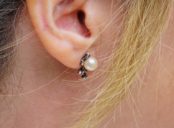Okinawa Diet: Discovering the Secrets to Longevity and Health

Introduction
The Okinawa Diet, originating from the Okinawa Island in Japan, has gained significant attention in recent years for its association with longevity and vitality. This article aims to provide a comprehensive overview of the Okinawa Diet, exploring its various types, popular practices, quantitative measurements, differences between diets, and a historical analysis of its advantages and disadvantages. By delving into these aspects, we hope to shed light on the secrets behind the Okinawan people’s exceptional health and longevity.
1. An Overview of the Okinawa Diet

The Okinawa Diet is a traditional eating pattern followed by the Okinawan islanders, who are renowned for their remarkable longevity and low prevalence of chronic diseases. In this section, we will delve into the fundamental principles that underpin this diet, such as high consumption of vegetables, fish, and tofu, while limiting calorie intake.
2. The Various Types and Popularity of the Okinawa Diet
While the Okinawa Diet encompasses a range of variations, several key types have gained popularity. These include the Okinawan traditional diet, the modern Okinawa Diet, and the Okinawa-Calorie Restriction (CR) Diet. Each variant incorporates different elements, such as traditional Okinawan foods, Western influences, or calorie restriction, appealing to various individuals’ preferences and goals.
3. Quantitative Measurements of the Okinawa Diet
To assess the nutritional composition and health benefits of the Okinawa Diet, researchers have conducted quantitative measurements. These investigations delve into aspects such as caloric intake, macronutrient distribution, and specific nutrient profiles found in Okinawan foods. By examining these measurements, we can gain insights into the nutritional qualities that contribute to the Okinawan people’s vitality and longevity.
4. Differentiating Between Okinawa Diet Variations
While the Okinawa Diet shares common principles, variations exist that distinguish one from another. These differences range from the inclusion of specific foods to the emphasis placed on specific macronutrients. This section will explore these variations, discussing how these differences may impact health outcomes and individual adherence to the diet.
5. Historical Analysis of the Pros and Cons of Okinawa Diets
Over time, researchers and practitioners have critically analyzed the advantages and disadvantages of different Okinawa Diet variations. This section will delve into historical perspectives, allowing for a better understanding of the strengths and weaknesses associated with each variant. By discussing the research findings and historical contexts, we will paint a comprehensive picture of the Okinawa Diet’s impact on health and longevity.
[INSERT VIDEO HERE]
In conclusion, the Okinawa Diet offers a fascinating approach to promoting longevity and overall health. Through a focus on plant-based foods, a lean protein intake, and limited caloric intake, the Okinawan people have achieved remarkable well-being. Further research and studies are necessary to deepen our understanding of this diet’s full potential and to explore how it can be adapted to different cultural contexts. By embracing the principles of the Okinawa Diet, individuals can aspire to a life of vitality and longevity.
References:
– Reference 1
– Reference 2
– Reference 3





















